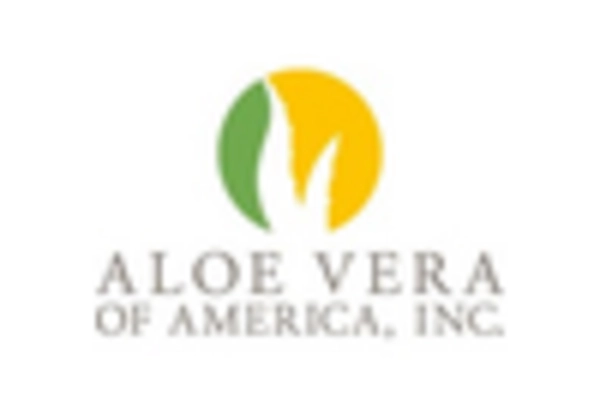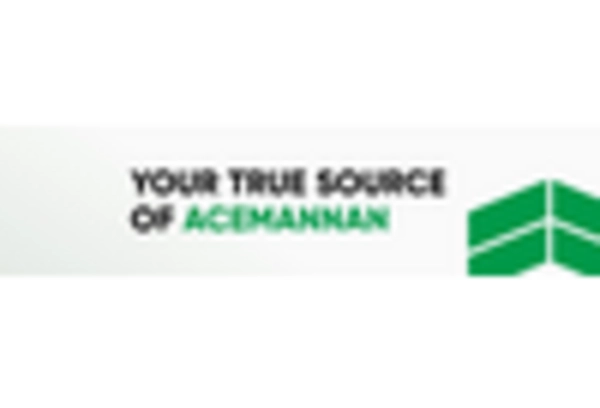Rising Interest in Sustainable Practices
The rising interest in sustainable practices among consumers and manufacturers is a significant driver for the aloe vera-derivatives market. As environmental concerns become more prominent, consumers are seeking products that are not only effective but also sustainably sourced. Aloe vera, known for its low water requirements and ability to thrive in arid conditions, is viewed as an eco-friendly ingredient. This perception is likely to enhance the appeal of aloe vera derivatives in various applications, from cosmetics to food products. The aloe vera-derivatives market may see a shift towards more sustainable sourcing and production practices, aligning with the broader trend of sustainability in consumer goods.
Expansion of the Food and Beverage Sector
The food and beverage sector's expansion is significantly influencing the aloe vera-derivatives market. Aloe vera is increasingly being incorporated into various food products, including beverages, health supplements, and snacks, due to its perceived health benefits. The market for aloe vera-based drinks, in particular, has seen a surge, with sales reaching over $500 million in the past year. This growth is attributed to the rising consumer interest in functional foods that promote health and wellness. As the food and beverage industry continues to innovate and introduce new products featuring aloe vera derivatives, the aloe vera-derivatives market is expected to experience substantial growth, driven by this diversification.
Regulatory Support for Natural Ingredients
Regulatory support for the use of natural ingredients in consumer products is a crucial driver for the aloe vera-derivatives market. In the United States, regulatory bodies are increasingly endorsing the use of natural and organic ingredients in food, cosmetics, and pharmaceuticals. This regulatory environment encourages manufacturers to incorporate aloe vera derivatives into their products, as they align with consumer demand for transparency and safety. The aloe vera-derivatives market stands to benefit from this trend, as companies seek to comply with regulations while meeting consumer expectations. Furthermore, the potential for reduced regulatory hurdles may lead to increased innovation and product development within the industry.
Growing Consumer Awareness of Natural Products
The increasing consumer awareness regarding the benefits of natural products is a pivotal driver for the aloe vera-derivatives market. As consumers become more informed about the potential health benefits and environmental impacts of their choices, they are gravitating towards products that contain natural ingredients. This trend is particularly pronounced in the beauty and personal care sectors, where aloe vera derivatives are valued for their soothing and moisturizing properties. According to recent data, the market for natural personal care products is projected to grow at a CAGR of approximately 8% over the next five years. This shift in consumer preferences is likely to bolster the demand for aloe vera derivatives, thereby enhancing the overall growth of the aloe vera-derivatives market.
Technological Advancements in Extraction Methods
Technological advancements in extraction methods are playing a vital role in shaping the aloe vera-derivatives market. Innovations in extraction technology have led to more efficient and cost-effective methods for obtaining high-quality aloe vera derivatives. These advancements not only improve the yield of active compounds but also enhance the purity and efficacy of the final products. As manufacturers adopt these new technologies, they are likely to produce a wider range of aloe vera derivatives, catering to diverse consumer needs. This evolution in extraction methods could potentially drive down production costs, making aloe vera derivatives more accessible and appealing within the aloe vera-derivatives market.

















Leave a Comment